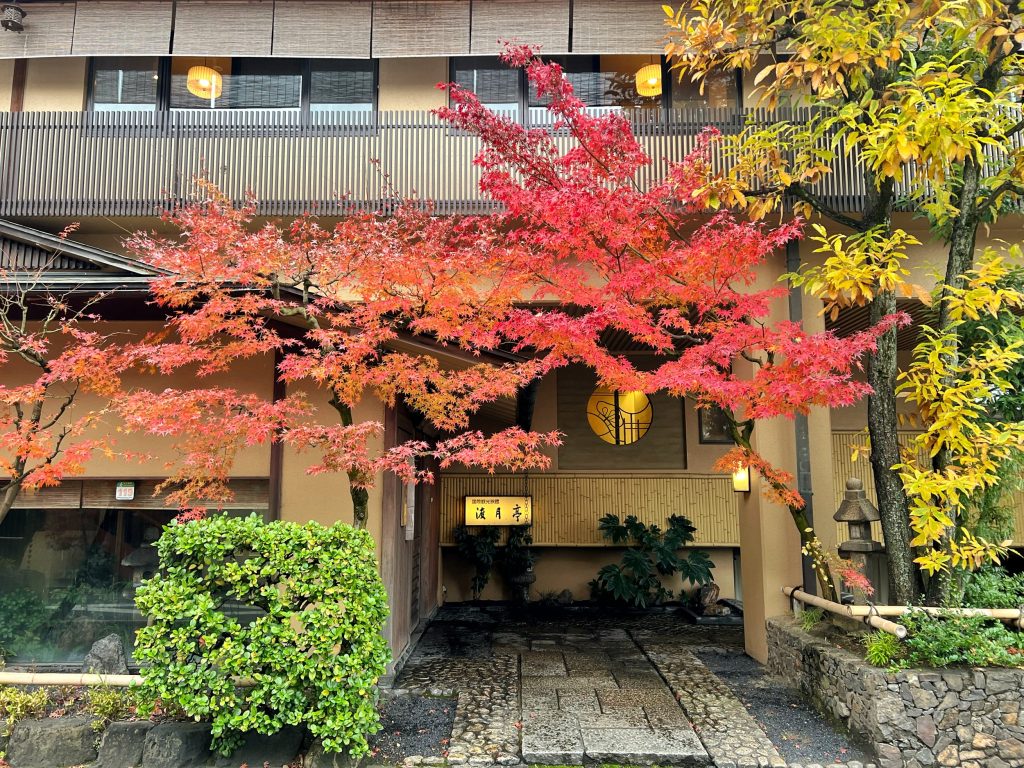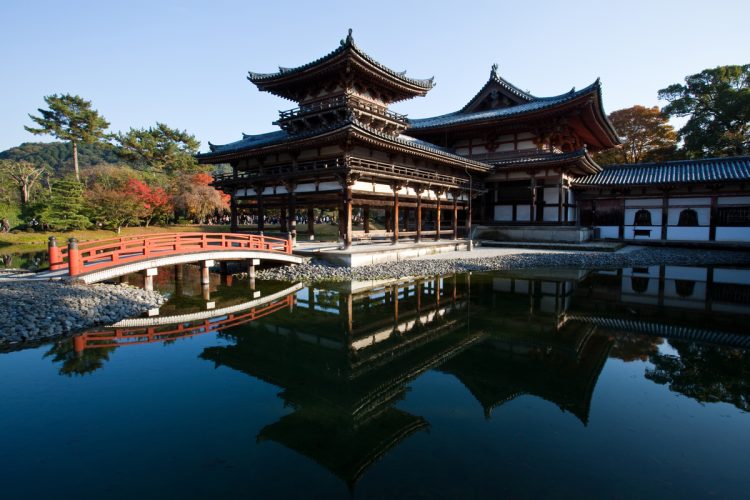There are few destinations in the world that carry the weight of history, spirituality, and stunning architecture like Kyoto and Angkor Wat. These two iconic locations—one nestled in Japan’s serene landscapes and the other in the heart of Cambodia’s lush jungles—continue to captivate travelers and pilgrims alike. Their spiritual significance, historical depth, and architectural splendor make them not just bucket-list destinations, but timeless symbols of cultural pride and reverence. As we explore the allure of Kyoto’s temples and the mystique of Angkor Wat, it becomes clear why these sites remain a dream for millions of travelers each year.
Kyoto’s Temples: The Elegance of Zen Gardens and Buddhist Traditions
Kyoto, once the capital of Japan, is often referred to as the heart of the country’s culture, and its spiritual significance is perhaps most evident in its stunning collection of temples and shrines. With over 1,600 Buddhist temples, 400 Shinto shrines, and a remarkable number of Zen gardens, Kyoto has preserved a unique blend of spiritual practice and natural beauty. Each temple tells its own story, but together, they form a serene tapestry of Japan’s dedication to the pursuit of enlightenment, tranquility, and harmony with nature.
Zen Gardens and the Art of Simplicity
Kyoto is a living testament to the Zen Buddhist principle of simplicity and austerity. At the heart of the Zen gardens lies a philosophy that is deeply embedded in Japanese culture: to find beauty in the simplest things and to create space for reflection and mindfulness. The Ryoan-ji Temple is perhaps the most famous example of this concept. Its rock garden—comprising 15 stones arranged on a bed of raked gravel—is considered one of the most iconic examples of Zen landscape design. The beauty of Ryoan-ji lies not in extravagant ornamentation but in its minimalist design, encouraging visitors to find meaning and clarity in its quiet simplicity.
Another temple that exemplifies Kyoto’s Zen culture is Kinkaku-ji (The Golden Pavilion), with its stunning reflection in the surrounding pond. Although more ornate than Ryoan-ji, Kinkaku-ji still encapsulates the Japanese principle of wabi-sabi, the appreciation of impermanence and the beauty in things that are fleeting or imperfect. Visitors often find themselves entranced by the play of light and shadow on the golden walls, which shift and change depending on the time of day and season.
Kyoto’s temples are not just places of worship—they are sanctuaries for introspection and peace. The city’s spiritual practices encourage a balance between nature and human existence, making each visit feel like a personal journey into the heart of Japanese culture.
The Role of Kyoto’s Temples in Japan’s Cultural Identity
Kyoto’s temples are more than just ancient buildings; they are the repositories of Japan’s spiritual and cultural identity. Temples like Kiyomizu-dera, Fushimi Inari Taisha, and Nanzen-ji are deeply interwoven with the lives of the Japanese people. Kiyomizu-dera, for example, is famous for its large wooden stage that overlooks the city. During the cherry blossom season, visitors can witness the breathtaking sight of pink petals cascading through the air, blending the beauty of nature with the sacred atmosphere of the temple.
The Fushimi Inari Shrine is one of the most iconic symbols of Kyoto, with its thousands of red torii gates that wind through the dense forested mountain. These gates, donated by individuals or companies, create a striking visual effect and symbolize the transition from the mundane to the sacred. Fushimi Inari Taisha is not just a tourist spot but a vital religious site for Inari worshippers, where people come to pray for prosperity and success.
These temples, with their intricate rituals and deep-rooted history, continue to inspire a sense of reverence. They allow visitors to engage with Kyoto’s past while embracing the spiritual ethos of shrine and temple life.

Angkor Wat’s Mystical Allure: The Ancient Temple Complex That Draws Millions
Nestled deep in the jungles of Cambodia, Angkor Wat is a colossal and awe-inspiring complex that stands as a symbol of Khmer architecture, artistry, and the devotion of a civilization that once ruled Southeast Asia. Built in the 12th century during the reign of King Suryavarman II, Angkor Wat was originally constructed as a Hindu temple dedicated to the god Vishnu. However, it gradually transitioned into a Buddhist temple, and today, it remains the largest religious monument in the world.
The Magnificence of Angkor Wat’s Architecture
Angkor Wat is renowned not just for its size but for its architectural brilliance. The temple complex spans over 162 hectares, making it larger than some small cities. Its five central towers symbolize the five peaks of Mount Meru, the axis of the world in Hindu cosmology, and its layout mirrors the Hindu vision of the universe, with intricate carvings and bas-reliefs depicting scenes from Hindu mythology.
Visitors are often struck by the grandeur of the outer gallery, where intricate carvings depict mythological stories such as the Churning of the Ocean of Milk, one of the most famous scenes in Hindu lore. The walls of the temple are adorned with thousands of detailed reliefs, showcasing an astonishing level of craftsmanship and artistry. The temple’s design is an architectural marvel that continues to baffle scholars and travelers alike, evoking a deep sense of wonder.
The Spiritual Experience of Visiting Angkor Wat
While the grandeur of Angkor Wat is undeniable, what truly makes this temple a mystical experience is the spiritual ambiance that permeates the site. The sunrise over Angkor Wat is an iconic moment for travelers, as the temple’s silhouette appears to rise from the misty jungle, bathed in soft golden light. For many visitors, this is not merely a photo opportunity but a deeply spiritual moment that connects them to the ancient world.
Walking through Angkor Wat feels like stepping into a living history book. The temple continues to be an active site for Buddhist monks, and visitors often encounter spiritual rituals taking place on the temple grounds. As the largest religious monument in the world, Angkor Wat draws millions of visitors annually, yet its spiritual significance remains intact, making it one of the most respected religious sites globally.
Beyond Angkor Wat: The Ancient City of Angkor
While Angkor Wat may be the crown jewel of the Angkor Archaeological Park, the entire park is home to dozens of other temples, each with its own character and charm. Bayon Temple, with its haunting stone faces, and Ta Prohm, where towering trees have entwined with the ruins, offer alternative perspectives of the ancient Khmer empire’s architectural prowess.
For those willing to venture beyond the most popular temples, the smaller, lesser-visited sites—like Banteay Srei (the “Citadel of Women”)—are also worth exploring. These temples showcase the intricate detail and mastery of ancient Khmer artisans, and their more remote locations provide a peaceful atmosphere far removed from the crowds.
How to Visit: Practical Travel Tips for Exploring Kyoto and Angkor Wat
Visiting both Kyoto and Angkor Wat is a once-in-a-lifetime experience, but to truly appreciate their beauty, there are a few things to consider when planning your trip.
Best Time to Visit Kyoto
Kyoto is a year-round destination, but the best times to visit are during the spring (March to May) and autumn (October to November) months. During these seasons, the temples are set against vibrant backdrops of cherry blossoms or fiery autumn leaves, offering stunning visual experiences. The summer months can be hot and humid, while the winter months are quieter, with fewer tourists, but cold temperatures.
Getting to Angkor Wat
Angkor Wat is located in Siem Reap, Cambodia, and the best time to visit is during the dry season (November to April), when the weather is more pleasant. Siem Reap is easily accessible by air, with direct flights from major Asian cities like Bangkok, Ho Chi Minh City, and Kuala Lumpur. It’s recommended to arrive early for the sunrise visit to Angkor Wat, as it’s a magical experience and helps avoid the crowds.
Tips for Visiting Both Sites
- Respect Local Customs: Both Kyoto and Angkor Wat are deeply spiritual locations. Dress modestly, and be mindful of the local customs and religious practices.
- Guided Tours: Hiring a local guide can enrich your visit to both sites, providing historical context and insights that may not be immediately obvious.
- Stay Hydrated and Wear Comfortable Shoes: Both locations involve a lot of walking. Stay hydrated, especially at Angkor Wat, where the weather can get hot, and wear comfortable shoes for exploring the temples.
Conclusion: Timeless Wonders for the Spiritual Traveler
Kyoto’s temples and Angkor Wat are not just travel destinations—they are spiritual sanctuaries that continue to captivate the imagination of millions of visitors every year. Kyoto, with its serene Zen gardens and deeply rooted Buddhist traditions, offers an experience of quiet reflection and beauty. Angkor Wat, with its majestic architecture and mystical allure, provides a window into a past civilization whose legacy endures through time. Together, these iconic locations offer a profound connection to the spiritual history of Asia, and whether you’re seeking tranquility or awe-inspiring wonder, they are two places that continue to call travelers from around the world.





















